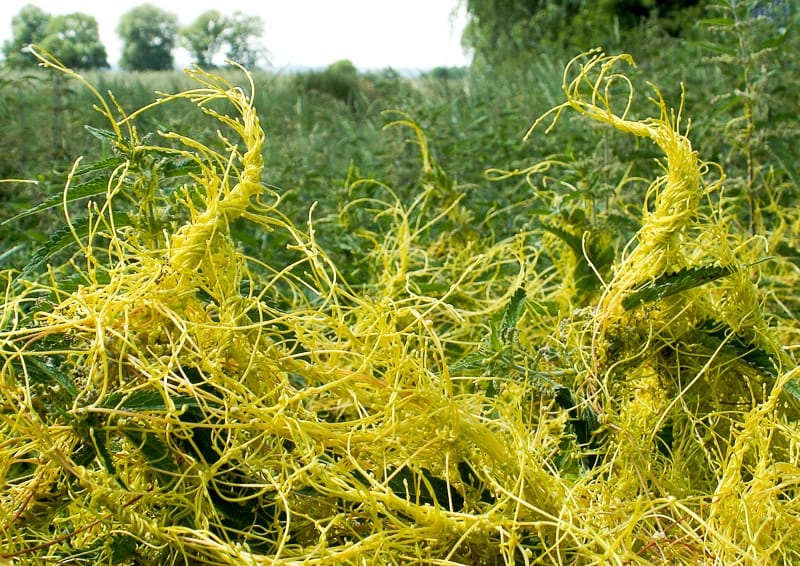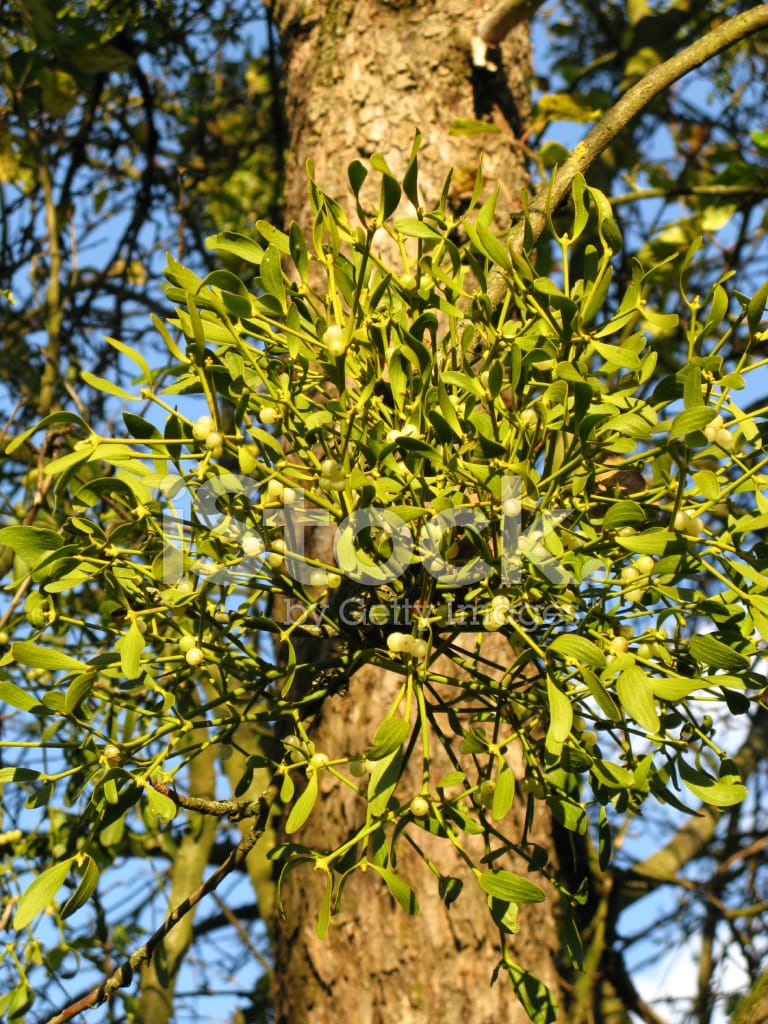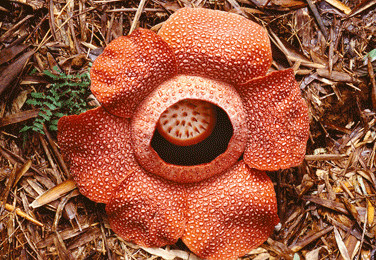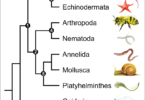What are parasitic plants explain with an example | what are parasitic plants give examples | define parasitic plants | what is holoparasite and semi parasite? | example of total root and stem parasite | examples of partial root and stem parasite.
hi guys in this article we know about what are parasitic plants explain with an example and what do you mean by parasite and host and know about various example of parasitic plant in this article.
The parasitic plants grow and obtained their nutritional requirement from their living organism that is known as host. Parasite completely or partially dependent on their host for food.

What are parasitic plants explain with an example
Table of Contents
What are parasitic plants explain with an example
Parasitic plants are those plants which are obtaining their nutrition, food, minerals and water from another plant known as host through special specialised pennetrating organ name haustarium, without contributing to the benefit of the host, and in some cases it causing extreme damage to the host.
Define structural features of parasitic plant in the presence of haustaria that is modified part of roots of parasitic plants is specialised organ that penetrates the host and make connection with xylem and phloem, a vascular union between the plants and absorb prepared food, nutrients, minerals and water from host plants without contributing to the benefit of the host and in some cases it causing extreme damage to the host plant.
Parasitic plants differ from others plants such as climbing vines, Lianas, aerophyte and epiphyte, all these are supported by other plant and it is not in parasitic in nature.
Santalum album, Rafflesia, Orbanche, Viscum, Cuscuta, Loranthus, Striga and Thesium are well known examples of parasitic plants. Rafflesia and Orbanche are total root parasite, Cuscuta is total stem parasite, Viscum and Loranthus are partial (semiparasite) stem parasite and Santalum album, Thesium and Striga are partial root parasite.
What are types of parasitic plants?
According to absorbing, nutrients, foods, minerals and water and connection with host plant parasitic plants categorised into two types- 1) holoparasite or total and 2) Partial or semiparasite.
What is holoparasite or total parasite? give examples
Holoparasite or total parasite:- holoparasite define as those parasitic plants which are non green, totally dependent on host for obtain their total food material including organic nutrients, water and minerals from the host body are called as holoparasites and they cannot survive without host. Cuscuta, Orobanche, Balanophora, Rafflesia are example of holoparasite.
What is semiparasite or partial parasite? give examples
Semiparasite or partial parasite :- semiparasite is define as those parasitic plants are green and can synthesise their own food but depend on host for absorption of minerals and water supply is known as semi parasite. So these types of parasitic plants partially dependent on other plant for making their own food. Loranthus, Santalum, Viscum, striga and Thesium are examples of semi or partial parasites
◆you should also visits our website https://biologysir.com and other website for civil engineer calculation at https://www.civilsir.com
■ follow on YouTube
◆name of fathers in field of Biology
● all full forms of 11th and 12th Biology
According to nature of parasitic plants where they grew on stems or root, totaly dependent or partialy dependent, parasitic plants are categorised into 4 types:- 1) total stem parasite, 2) partial stem parasite, 3) total root parasite and 4) partial stem parasite
What is total stem parasite? give examples
Total stem parasite defined as those parasitic plant which are non green, rootless, grow on stem of host plant and totally dependent on host plant for food nutrition, minerals and water, all this make easy by special define structure known as haustaria that make vascular union between stem of host plant and parasitic plant. Cuscuta is well known example of total stem parasite
What is total root parasite? give examples
Total root parasite defined as those parasitic plants which are non green, rootless, grow on root of host plant and totally dependent on host plant for food nutrition, minerals and water, all this make easy by special define structure known as haustaria that make vascular union between root of host plant and parasitic plant. Rafflesia, Orbanche and Balanophora is well known example of total root parasite.
What is partial root parasite? give examples
Partial root parasite defined as those parasitic plants which are green, grow on root of host plant and partialy dependent on host plant for nutition, only absorb minerals and water. Santalum album, Striga and Thesium are well known example of partial root parasite.
What is partial stem parasite? give examples
Partial stem parasite defined as those parasitic plants which are green, grow on stem of host plant and partialy dependent on host plant for nutition, only absorb minerals and water. Viscum album and Loranthus are well known example of partial stem parasite.
What are parasitic plants? give examples
Parasitic plants are those plants which are obtaining their nutrition, food, minerals and water from another plant known as host through special specialised pennetrating organ name haustarium, without contributing to the benefit of the host, and in some cases it causing extreme damage to the host.
Santalum album, Rafflesia, Orbanche, Viscum, Cuscuta, Loranthus, Striga and Thesium are well known examples of parasitic plants. Rafflesia and Orbanche are total root parasite, Cuscuta is total stem parasite, Viscum and Loranthus are partial (semiparasite) stem parasite and Santalum album, Thesium and Striga are partial root parasite
What is example of parasitic plants?
Santalum album, Rafflesia, Orbanche, Viscum, Cuscuta, Loranthus, Striga and Thesium are well known examples of parasitic plants. Define structural features of parasitic plant is the presence of haustorium that make connection with xylem and phloem of host plant and absorb prepared food, nutrients, minerals and water from plants without contributing to the benefit of the host and in some cases it causing extreme damage to the host plant.
What is example of total root parasitic plant?
Example of total root parasite:– Rafflesia and Orbanche are example of total root parasite. It develop define structural features haustorium modified roots of parasitic plants that’s penetrating the roots of host that make connection with xylem and phloem of host plant and absorb prepared food, nutrients, minerals and water from host plants without contributing to the benefit of the host and in some cases it causing extreme damage to the host plant.
What is example of partial root parasitic plant?
Example of partial root parasite:– Santalum album, Striga and Thesium are example of partial (semi- parasite) root parasite. Santalum album is evergreen partial root parasite which grow in South India and it grow in roots of dalbergia Sisso and Eucalyptus. Striga grows on roots of sugarcane and Thesium on the roots of grasses. Partial root parasitic plant develop define structural features haustorium modified roots of parasitic plants that’s penetrating the roots of host that make connection with xylem of host plant and only absorb minerals and water from host plants without contributing to the benefit of the host.
What is example of total stem parasitic plant?
Example of total stem parasite:- Cuscuta is example of total stem parasite, it is rootless total stem parasite, yellow coloured, slender stem with small scale leaves, which twins around the host plant and define structural features haustorium of cuscuta that’s penetrating the stems of host that make connection with xylem and phloem of host plant and absorb prepared food, nutrients, minerals and water from host plants without contributing to the benefit of the host.
What is example of partial stem parasitic plant?
Example of partial stem parasite:- Viscum album (mistletoe) and Loranthus are example of partial (semi- parasite) stem parasite. Viscum album grow on number of shrubs and trees, it sends secondary haustarium with make connection with the xylem of host and absorb only Minerals and water.

Cuscuta parasitic plant
Cuscuta total stem parasite
Cuscuta well known as Dodder, Amarbel, Akash bel is common example of total stem parasite. It is stem parasite of many Angiospermic plant like Zizyphus, Citrus, Duranta and Clover.
Seeds of Amarbel germinate in the soil seedlings are long filamentous and without cotyledons the young plants grow and perform circumutation or rotatory movement and they twin around the stem and sometime leaves of host plant. If the host plant is not available the young plant of amarbel will die. For the establishment contact with the host plant the young seedling develop obsorbing organ that is known as haustoria.
Haustoria is modified adventitious root which deeply penetrate into the body of host and vascular tissue of parasites make contact with that of host through these haustoria. The haustoria are metabolic active organs which help in absorption of nutrients and provide the channel for their transportation. When strong connection is established between Amarbel and host plant then mature plant loses its connection with the soil and become totally dependent on their host.
The mature plant of Amarbel is very long filamentous branched pale yellow in colour with small scaly leaves and it can produces bunches of white or pale yellow bell shaped flowers.

Viscum parasitic plant
Viscum album partial stem parasite
Viscum is common example of partial stem parasite and their host plant is shrubs and fruit trees. The mature plant of Viscum is is branched with Green Leaves born in pairs attached on each node of stem. Shoot of Viscum is attached to the host by means of haustoria
There is two type of haustorium develop in viscum parasitic plant that is primary haustoria and secondary haustoria .The primary haustorium reaches up to cortex of the host and it sends secondary haustoria which make connection with xylem of host and absorb water and Minerals.

Orobanche
Orbanche total root parasite
Orobanche is common example of total root parasite and that parasitizes on the roots of many angiospermic plant such as mustard tomato potato brinjal. Orobanche parasitic plant have no chlorophyll and the flowers are pinkish or bluish in colour . The tips of roots make haustorial connection with the roots of host and absorb nourishment.

Rafflesia
Rafflesia total root parasite
Rafflesia is common example of total root parasite and it has about 14 species commonly distributed in Indonesia and Myanmar. The vegetative parts of parasites are highly reduced and represented by cellular filament resembling fungal mycelium. These filaments are embedded in the soft tissue of post root such as Figs. While the flowers emerged out in the form of buds. The flowers of Rafflesia are the largest in the world and they are about 11 kg in weight and 1 metre in diameter.

Santalum sandal wood tree
Santalum album partial root parasite
Santalum album ( sandal wood tree ) is common example of partial root parasites and evergreen which grows at many places in South India. The young seedlings of santalum can grow independently upto year but not beyond that . within this period some of the roots develop haustoria which make contacts with the roots of nearby tree like Morinda, Dalbergia, Eucalyptus . They are normally green in colour but depend on host for water and mineral supply.






Leave a Comment